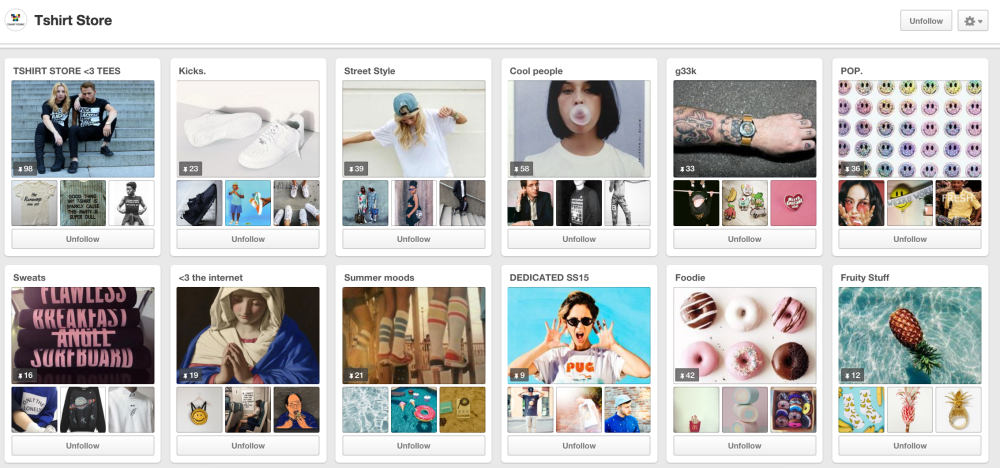Posts in Category: Strategy
How to measure content marketing
There’s no point in doing the hours and effort of content marketing if you’re not going to do the proper measurement. Measuring for its own sake is pointless – you need to integrate your content marketing in your overall business goals. In this post I will focus on website content creation, but there is of course different KPIs for other social channels. Let’s get started:
First off, you always need to see to see content as an actual value. To create good value, you need a clear purpose. Why are you creating this piece of content in the first place? Recognising this is the first step to find the metrics you need to create content that actually converts.
You shouldn’t create any content without having at least one of these objectives in mind: increasing brand awareness, lead generation, customer retention or direct sales. Try to put these metrics to value in line with your other marketing efforts. What is the average order value? What is your percentage of new vs returning customers, and which one generate the most revenue? Does it differ from organic and paid channels? The more of these things you have in place, the easier it gets to start analyzing the data. For OnPage metrics, I usually navigate in Google Analytics Landing Page reports using pre-defined and custom segment. But you should also use unique campaign tracking for all your content to be able to compare the results to one another.
For reports, I set up dashboards for the following metrics:
- Consumption metrics including how many people are viewing your content, in which channels, how frequently and how in-depth. KPIs: page views, unique visitors, and average time on page. You can also narrow this down on source/medium, location, mobile users etc and compare the data.
- Engagement and sharing metrics looking at how your audience is interacting with your content, what pieces of your content that is shared in other channels, who is sharing them, where and how often. KPIs include: Avg Time on Page, Pages/Session, New vs Returning. You should also try GA’s Content Grouping to segment your content with regard to the kind of content users are engaging with.
- Sales metrics looking at how your content drive revenue for your business. KPIs are Transactions, Time to Purchase and Assisted Conversion. If you have proper Goals set up in your account, you can ccess the funnel visualization report to review where your customers dropped off. More cost oriented, there is one ROI model that I like, one that I’ve borrowed from the Content Management forum Curata: “For each piece of content x in Campaign C, take the $ amount of Revenue generated (a sales metric) by Content x and divide it by the ($ product cost). If the ratio is greater than 1, your content was profitable from a sales perspective.”
Why you need a global content strategy
I mentioned the importance of being a global brand, and optimizing for your key markets and audiences. This means you need to have a global content strategy, which is why this blog post will focus on localization. Localization is just what it sounds like: adjusting your content to present what is most relevant to a specific market. Why? Because it has great effect on consumers’ purchasing behaviour:
72.1% of consumers spend most or all of their time on websites in their own language
72.4% of consumers said they would be more likely to buy a product with information in their own language
56.2% of consumers said that the ability to obtain information in their own language is more important than price
So how do you do this?
- Research: Look at the numbers. What are your most important markets? Do you have the resources (time, expertise)? How do you prioritize? And maybe the most important question – what are your business goals? Don’t forget to look at what your competitors are doing and find your advantage. When you’ve decided on your market(s), do your research and do not trust your “gut”.
- Execution: Localization does not only mean translating your content, you also need to point your visitor to the right landing pages without a glitch. There are different technical solutions here, so you need to find what works with your platform.This is important – you don’t want Google to index your translated content as duplicates. And make sure to Google’s href lang tag to display the right content in search engines.
- Translations: Be consistent with your language and tonality and don’t overdo it, because it will take time (and time is money). And do not forget the SEO.
- Consistency: A localization is not a one-time job. It takes time and consistency and you need to work with all content parallell.
- Implement this strategy in all social channels. And see if there are more social platforms that you might be overlooking. Again – do not trust your “gut”.
Good luck, bon chance, 祝你好运,Viel Glück!
Should you do video marketing?
Think with Google recently posted the article New Data Shows Online Video Ads Drive Consideration, Favorability, Purchase Intent, and Sales. We’ve already seen motion as a medium in the rise and growth of Periscope, Facebook Live Video, Instagram Video and Vine. Not to mention YouTube continuous growth – with a ROI that is higher than on TV in various categories. In the article, Google shares data from two recent studies that shows just how much YouTube can move the needle on brand metrics across the consumer journey—from consideration and favourability to purchase intent and sales.
According to a survey conducted by Nielsen, 64% of marketers plan to increase their focus on video content. Brands and marketers have reason to embrace video, not only because it allows them to have a stronger connection with their audience, it’s also proven to have higher engagement. In other words – in 2016, video needs to become a bigger part of every company’s content and marketing strategy. Now’s that time to start thinking about reallocating your digital marketing budgets.
So should you do video marketing? The answer is probably yes.
The Pinterest Content Strategy
A long, long time ago I blogged that I would put together a Pinterest strategy and here it finally is! This post is mainly about the content of your Pinterest account; the what’s, when’s and why’s so to speak and not much about the promoted pins. Not at all actually but here we go!
So, you got the basics done. You have setup an account, verified your business and maybe even created a few boards. Now what? First – take a moment to think about your business. What are you selling?
69% of online consumers who visit Pinterest have an intention of doing some online shopping too. That said, you need to see this as an opportunity to create brand awareness and the ability for customers to browse and get inspired on a massive scale. It’s your online store front for potential customers, browsing to buy.
Pinterest is a fantastic medium to really express what your brand is about but this also means that you need to be able to visualize the products you’re selling. That does not mean pinning product pictures from your online shop. Instead, you should target your potential customer’s interest surrounding your product. Create boards that focus on a specific theme that is related to your brand, and in a context that inspires people.
Below is two screenshots of Tshirt Store‘s Pinterest page and I thought we’d go through it a bit. (Disclaimer: I manage this page).
Tshirt Store’s Pinterest has got a lot of boards, above is just a few of them. All boards are created with inspiration from the collections that we’re currently selling in stores and online, including all our brands, artists and collaborations. “Fruity Stuff” is a reference to a popular pineapple print we sold last season, and “POP” mostly consists of different Smiley/emoji references – and Smiley is one of our collaborations. We pin our own products from our site, but we also cross-post re-pins and posts with our other social accounts to share inspiration. A very important note is that you always need to credit the original pinner/url, that’s just good manners.
Tshirts (and some streetwear) are our main online business of course but we’re not posting our product pictures, or even our own brand imagery. We are adding some of our own content, pinned from the online shop, but mostly we’re repinning other content with witty, young, pop-culture references that correlate with what we are selling/and producing ourself. Basically, we are pinning what we want to be. By putting ourself in that context, it associated our own products with the same.
Other things you can try
- Create a collaborative board with your fellow pinners
- Pin to Win contest with a unique hashtag that you can use in all social channels
- Gift Guides and Holiday Guides through themed boards. Inspiration for wishlists!
- Promote contests encouraging pinners to pin products from your site
To conclude: Pinterest should be easy and fun. The frequency is not as important as with other channels, but be consistent and don’t do excessive pinning all at once. Start out small and see what works for your specific brand. Measure the amount of traffic, time spent on page(s) and conversions on your page. Keep in mind that all the images you pin from your own channels should have relevant alt-tags (including your brand, product name and/or product category) and of course a good landing-page to strengthen your SEO. If you upload images through Pinterest – name them properly.

